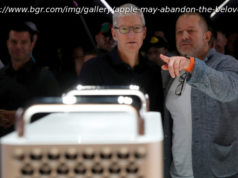A new exhibit at the Los Altos History Museum tells the story of Eichler homes, built to be affordable for middle-class families across the Bay Area — and now worth millions.
LOS ALTOS — The Los Altos History Museum sits smack in the middle of a red-hot Silicon Valley neighborhood. The median sale price of a single family home in ZIP code 94022 is $3,525,000.
How ironic, then, that the museum’s latest exhibition focuses on a time when Santa Clara Valley land could be had for a relative pittance and a developer with a vision could build thousands of affordable, custom-designed homes. We are talking about Joseph Eichler, whose open and airy, light-filled houses sold half a century ago for around $40,000 and are the subject of “Eichler Homes: Modernism for the Masses, ” which runs through Oct. 8.
Related Articles
East Bay real estate: As home supply drops, prices keep rising — by 16 percent in Oakland
50-apartment project on El Camino gets OK from Palo Alto commission
Bay Area real estate: Region has tightest housing supply in state — and highest prices
Bay Area rent increases leave wage gains in the dust
Berryessa BART sparks transit village plans at flea market “Eichler, he had a vision, he had an ideal, and he was able to execute on that ideal, ” said Elisabeth Ward, the museum’s executive director.
“He was about more than `slap ‘em up, get ‘em done, move on,’ ” said Steven Eichler, the developer’s grandson, who lives in Menlo Park and curated the exhibit.
An accountant before he became a developer — he once worked for a butter-and-eggs wholesale firm in San Francisco, the exhibit points out — Joseph Eichler wanted to improve the quality of housing across the region. He built attractive homes and priced them right for middle-class families.
Alas, his egalitarian dreams have been upended.
One Eichler home in Los Altos — a tricked-out, five-bedroom version from the late’ 60s, covering 3,100 square feet — recently sold for $3.5 million. Other Eichler homes, smaller ones, typically sell for $1.7 million or $1.8 million, which may fit the sweet spot of some buyers in today’s distorted market. Still, seeing his grandfather’s middle-class aesthetic upended is a “sad thing, ” Steven Eichler said. “The definition of affordability has changed.”
The new exhibit explores that aesthetic and the period in which it emerged.
Between 1949 and 1974, Eichler Homes — first headquartered in Palo Alto, later in San Francisco — built 10,500 homes across the Bay Area, mostly concentrated in all-Eichler neighborhoods that still dot the region, from Concord in the East Bay to Willow Glen in San Jose.
Remarkably, Eichler engaged top-shelf architects to design his houses.
Three of those architects were Claude Oakland, A. Quincy Jones and Robert Anshen, who spun ingenious variations on what came to be known as the Eichler style. Inspired by architect Frank Lloyd Wright, it features clean-lined post-and-beam construction, vaulted ceilings, open floor plans where one room flows into the next — and entire walls of windows.
Walk through the front door of an Eichler home and one often sees clear through to the backyard. The design has a way of “bringing the outside in, ” as Eichler homeowners like to say.
The museum’s 1,200-square-foot gallery — a bit smaller than a modest Eichler home — captures the spirit of its subject. It has a glass wall of windows looking out over a shady courtyard. Airy and bright, the gallery is painted in white, cream and apricot tones selected by Judi Eichler, Steven’s wife. She designed the exhibit, which is filled with furniture and artifacts that exude the flavor of the period.
Standing in front of a photo of his grandfather — “Steven, you have his chin, ” Ward commented — Steven Eichler showed a visitor around.
Mid-century modern furnishings dominate: a large reclining chair and Ottoman by designers Charles and Ray Eames, made in 1950; a pair of swoopy La Fonda armchairs by the same design team, from 1954. Over by the windows, there’s a children’s corner with play tables and tiny iron-frame chairs, including one with a blue seat that belonged to young Steven while growing up in an Eichler home in Atherton. Beneath it, an Atomic Age play rug is straight out of “The Jetsons, ” adorned with images of spinning protons and electrons.
In the display cases, one finds more objects of the era: a martini decanter and glasses, which might have come off the set of “Mad Men”; a Danish fondue fork set; a Japanese geisha sculpture; a glazed cigarette box. There’s a box of Eichler Homes matches, an Eichler Homes stock certificate (the corporation was publicly traded for years) and architectural drawings from various Eichler models.
Steven Eichler, who manages design and construction projects in under-served neighborhoods, remembers his grandfather as an outspoken, cigar-smoking man — “a large presence in a room.” Active in the Democratic Party, Joseph Eichler had a way of turning dinner-table conversation toward politics and was famous for his anti-discrimination position on housing. He sold houses to anyone regardless of race or religion, and, in 1958, he resigned from the National Association of Home Builders when it failed to support a non-discrimination policy.
The exhibit includes testimonies from longtime Eichler homeowners — “Breaking up with your Eichler is hard to do, ” is how one begins — and has become a magnet for the local Eichler crowd. Ward said the number of visitors to the museum has doubled since the exhibit opened a few weeks ago, and she is struck by their responses as they wander through the collection: “All you have to say is, `Have you ever lived in an Eichler?’ And all of a sudden, you start getting all these life stories.”
The connection the visitors feel is in part explained by the fact that Eichler strove “to engineer a sense of community, ” Ward continued. “I think he succeeded. You look at the neighborhoods that he built — the circular streets, the community center, the swimming pool. He was designing neighborhoods. The whole neighborhood has integrity to it, so the idea of tearing down an Eichler” — it has happened repeatedly on the Peninsula in recent years, creating angry divisions between neighbors — “is seen as detrimental to the vision of the whole neighborhood.






